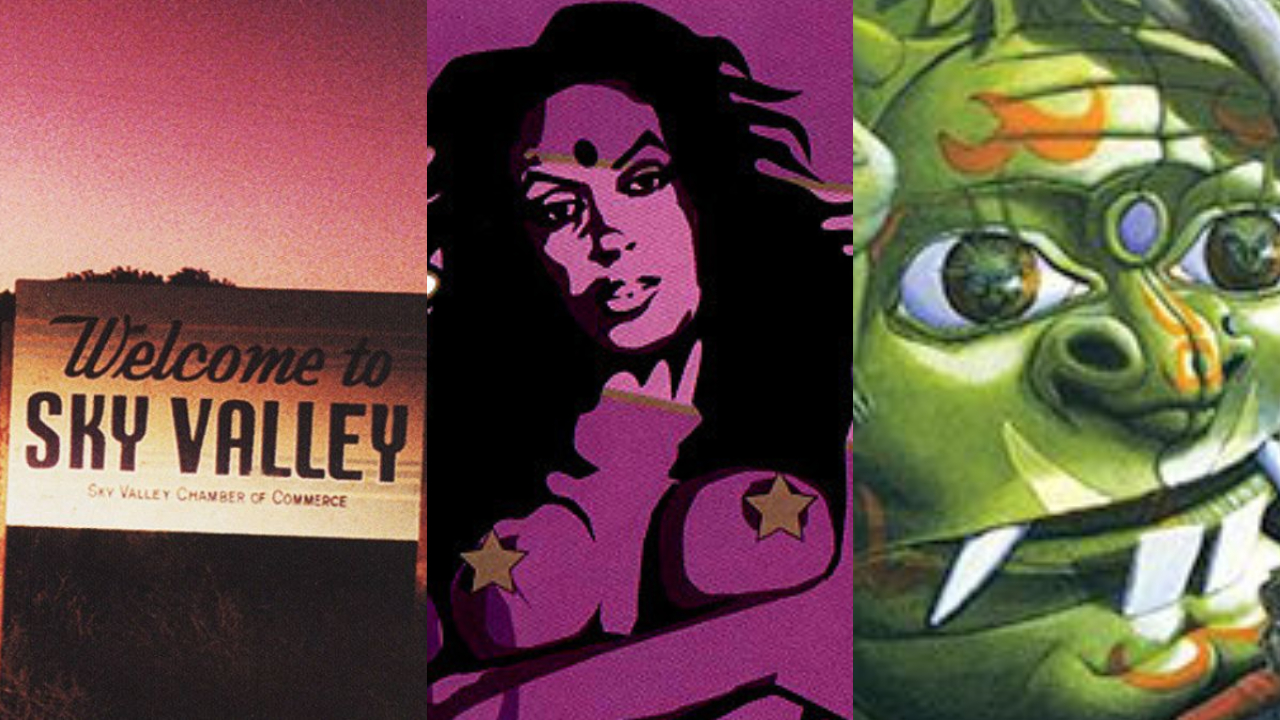
With its roots stretching right back to the earliest days of heavy metal, stoner metal is often seen as one of the metal subgenres closest in spirit to the source of the entire genre. Be it the legendary generator parties that sparked the desert rock boom of the early 90s, Britain's own prolific stoner/doom crossovers or Scandinavia's groove-laden contributions to the scene, one thing is clear: there's more to stoner than a shared love for the devil's lettuce.
These days you can find entire festivals dedicated to stoner - Desertfest and Heavy Psych Sounds fest, to name two - and bands around the world united in the love for 70s style heavy metal and hard rock. But these five records represent the game-changing moments in the development of the haziest of metal's sub-genres.

Black Sabbath - Master Of Reality (1972)
As with much else in heavy metal, stoner can trace its roots right back to Black Sabbath. Sabbath's love for the green was well established by the time the band recorded their third record Master Of Reality in 1972, and the Brummies pinned their colour(s) to the mast with the subtle-as-a-sledgehammer opening track Sweet Leaf.
The rest of Master Of Reality plays out like a blueprint for generations of stoner bands to come: thick, grooving riffs, tight, winding beats and instrumental jams mixing together to offer a groovier counterpoint to the doom and gloom of Sabbath's first two records, birthing an entirely new subgenre in the process.
Sleep - Sleep's Holy Mountain (1992)
Although stoner metal found its roots in 70s British acts like Sabbath, Deep Purple and Led Zeppelin, it wasn't until the 90s in the US that the genre truly started to take off in any serious way. Slightly removed from their fellow stoner pioneers in the Palm Desert (more on them below), San Jose's Sleep were tapping the bluesy Sabbath vein hard when it came to 1992's Holy Mountain.
Mixing the sludgy angst of early Melvins with the roiling grooves of Sabbath, Sleep's second record arrived just as the US stoner scene was starting to rear its head. The likes of Monster Magnet, Corrosion Of Conformity and Clutch proved a new school of haze-fuelled heavy metal was taking root in the US, with Sleep setting a high watermark for the bands that followed in their wake.
Kyuss - Welcome To Sky Valley (1994)
Springing up around generator parties hosted by desert punks who couldn't afford to travel to LA or San Francisco for shows, California's Palm Desert scene has since become a lengendary entity in stoner for later spawning the likes of Fu Manchu, Fatso Jetson and Queens Of The Stone Age. But chief among these was Kyuss, the legendary group featuring (at various points): Brant Bjork, John Garcia, Josh Homme and Nick Oliveri, helping to effectively take the style out of the wilderness and to fans around the world.
Kyuss had already stumbled onto a winning formula with 1992's Blues For A Red Sun, but found widespread acclaim still eluded them as grunge blew down from further up the coast in Seattle. It was their 1994 follow-up Welcome To Sky Valley that proved to be their breakthrough moment. Now signed to Elektra, Sky Valley's epic jam-driven compositions offered a more psychedelia-laden vision of what stoner could be beyond a shuffling of satisfying Sabbath riffs and grooves, sending the genre careening out into the cosmos with an exhilarating sense of adventurousness that has seldom been matched and certainly never bettered.
Cathedral - Caravan Beyond Redemption (1995)
The dividing line between doom and stoner is often as simple as a question of pace and tone, but few bands played as fast and loose with the interplay between the genres as Britian's Cathedral in the early 90s. Formed by former Napalm Death singer Lee Dorrian, Cathedral's debut Forest Of Equilibrium was as apocalyptically dour as doom comes, but by its 1993 follow-up the band had started chucking the odd Mountain riff into the mix to speed things up.
1998's Caravan Beyond Redemption marked the point Cathedral swung the pendulum firmly over to the stoner side, bursting forth with fuzzy, Deep Purple-via-Sabbath riffs that gave rise to a new school of underground artists, while Dorrian's own label Rise Above Records quickly signed future British stoner/doom stars Orange Goblin and Electric Wizard.
Spiritual Beggars - Ad Astra (2000)
Not content with revolutionising melodeath with the likes of Carcass and Arch Enemy in the 90s, guitarist Michael Amott also tried his hand at massive, 70s-style stoner rock grooves. By the time his group Spiritual Beggars went to record their third album Mantra III in 1998, they had been signed to Music For Nations, but it was 2000's Ad Astra that proved to be their major breakthrough, landing them on the radar - and tour bills - of everyone from Queens Of The Stone Age to Iron Maiden. Just one listen to the propulsive racket they create leaves no question as to why.
As has become characteristic in much of the European (and in particular, Scandinavian) stoner scene, the Black Sabbath DNA was dialled right back for Spiritual Beggars, the band instead choosing to indulge the larger than life finesse of bands like Mountain, Boston and Deep Purple, Amott's riffs soaring atop a psychedelia-laced din that only mildly hints to the fuzz so beloved in other stoner scenes.







